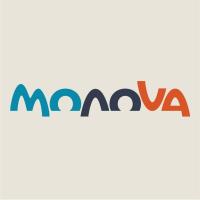MONOVA Museum and Archives of North Vancouver
Our Trips
Availability: Native-Newcomer Relations PDF
The Native Voice was the first newspaper to focus on Indigenous issues in Canada. Through four case studies, students critically analyse articles from The Native Voice and other newspapers to look at the topics of Indigenous rights and land title in British Columbia. This program has been organized with the Squamish Nation Education Department and made possible in part through a grant from the Museums Assistance Program, Department of Canadian Heritage.
Your students will:
- Analyze archival and contemporary newspaper articles relating to Indigenous rights and land title.
- Answer and discuss critical thinking questions to develop a deeper understanding of the topic.
Students come to know səlilwətaɬ (Tsleil-Waututh) Chief Dan George through historical photographs, images of his belongings, video footage, and his writing. They discover how his acting career helped change the image of Indigenous people in the media and how his activism raised awareness of Indigenous rights in Canada.
Your students will:
- Analyse primary source evidence to assess historical significance
- Discuss the ‘Lament to Confederation’ and consider modern perspectives on the piece
- Watch a unique video about Chief Dan George produced by the NVMA.
Students explore and analyse archival photographs featuring Sḵwx̱wú7mesh (Squamish) people and places chosen from an exhibit presented at the North Vancouver Museum & Archives (NVMA) in 2010. This was a shared project of the NVMA and the Sḵwx̱wú7mesh Úxwumixw (Squamish Nation). The Squamish Elders and Language Authority chose these photos that represent local landscapes, the community and individuals, and contributed to exhibit research.
Your students will:
- Recognize that the Sḵwx̱wú7mesh Úxwumixw (Squamish Nation) is an active community today on the North Shore.
- Discover aspects of Sḵwx̱wú7mesh (Squamish) history and culture through photos.
- View primary source evidence and develop photo analysis skills.
Grade appropriate activities help students explore the strength and resilience of səlilwətaɬ (Tsleil-Waututh) and Sḵwx̱wú7mesh (Squamish) cultures. Researched by Sḵwx̱wú7mesh author and language teacher Khelsilem with MONOVA staff members, this fully-illustrated, limited edition book, looks at the traditional and contemporary history and culture of both Nations. The Book and Teaching Package will be provided electronically. This program is available in French and English.
English: Intermediate Education and Secondary Education
French: Intermediate Education and Secondary Education
Your students will:
- Explore the cultures and histories of the səlilwətaɬ (Tsleil-Waututh) and Sḵwx̱wú7mesh (Squamish) nations.
- See contemporary & historic photos of the səlilwətaɬ (Tsleil-Waututh) and Sḵwx̱wú7mesh (Squamish) communities.
- Think about the cultural resilience of the səlilwətaɬ (Tsleil-Waututh) and Sḵwx̱wú7mesh (Squamish) people.
Listen to the voices of BC mountaineers, analyze photographs of their expeditions and tools of the trade, and discover their role in wilderness conservation. This education kit investigates the relationship that the Indigenous people have had with local mountains, the scientific and technical advances made by mountaineers, the impact of Mountaineers on wilderness conservation, and how mountain experiences have influenced our cultural heritage. It is based upon the virtual exhibit of the same name (available in French and English).
Your students will:
- Learn how people have interacted with the North Shore mountains over time.
- Explore primary source evidence of mountaineering history in BC.
- View primary source evidence and develop photo analysis skills.
- 1 of 4
- next ›







